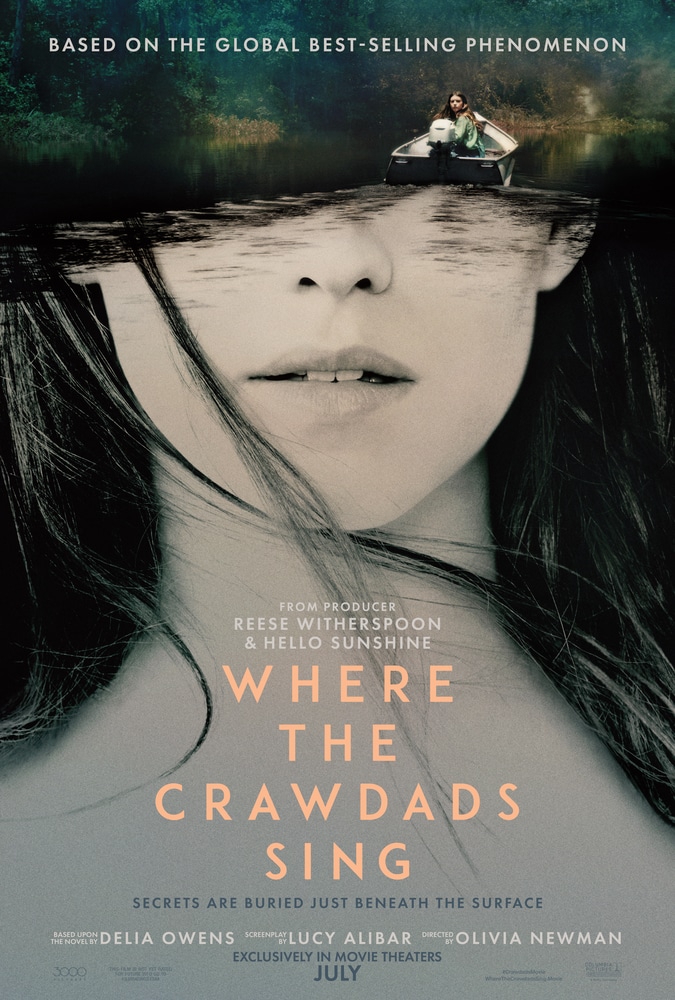
- Starring
- Daisy Edgar-Jones, Taylor John Smith, Harris Dickinson
- Writer
- Lucy Alibar
- Director
- Olivia Newman
- Rating
- 14A (Canada), PG-13 (United States)
- Running Time
- 125 minutes
- Release Date
- July 15th, 2022
Overall Score
Rating Summary
Based on the best selling novel, Where the Crawdads Sing is an adaptation that remains fairly close to its source material. For those who might not have read the book, however, its 2+ hour long runtime might feel like a bit of a drag. Opening with the discovery of local football star Chase Andrews (Dickinson) dead at the bottom of a tower, a remarkably small portion of the film is dedicated to the actual murder plot, most of which takes place over the course of a courtroom trial. The rest of the film attempts to carve out the character of Kya Clark (Edgar-Jones), a woman left alone in a North Carolina at a young age and forced to fend for herself. While it tries its best to make a compelling story, its script struggles to bring life to its plot or characters.
The main issue of Where the Crawdads Sing is its plot, one made up of an interconnection of several elements thrown together in the hopes of making a somewhat cohesive story. At times, the film could be a murder-mystery tied to a failed courtroom drama paired or a coming-of age story linked to a romantic melodrama of Kya stuck in a love triangle between two boys. Mostly taking place via flashbacks, they show Kya being left alone by her family (though Kya is remarkably clean despite living in the marshes her entire life). Uneducated and illiterate, she’s later taught to read by Tate Walker (Smith), a local boy who takes interest in her. What follows is an attempt to construct Kya’s background and create interest in the characters. However, the shallow and one-dimensional depiction of every other character aside from Kya hardly makes them interesting characters, let alone worthy love interests. With the characters having no discernable personality outside of knowing Kya, it’s hard to be compelled by their presence in the story or their romance with Kya.
Aside from that, the story is too stuffed, filled to the brim with a multitude of ideas and themes but barely fleshing any of them out beyond a surface level just like most of its characters. It attempts to be a courtroom drama, a romance, and a mystery film all in one but fails to strike enough of a tonal balance. Featuring so many flashbacks, it’s easy for audiences to forget that that there is also a murder investigation looming over all of it. Very little of the murder-mystery element is utilized or even expanded upon therefore it just feels wasted and held the film back as it dragged each time flashing forward to the trial. Though there were certainly interesting ideas beneath the surface about morality and isolation and first love, anything meaningful is washed away by the overstuffed plot.
Even though the screenplay is lackluster and the character dynamics are underdeveloped, Edgar-Jones’ performance as Kya is further proof that she is one of the breakout stories of the pandemic. Giving Kya depth and providing empathy for her allows audiences to better connect with her. She delivers the only multilayered performance as a clearly complicated character beneath the surface. Meanwhile Polly Morgan, the DP of A Quiet Place Part II, displays the beauty of the marsh on screen. With gorgeous shots of the marshlands, it’s easy to forget, just for a moment, that they’re contained within a melodramatic romance-drama-mystery. However, most of the atmosphere comes from the beautiful score by Mychael Danna, Oscar winning composer for Life of Pi. His beautiful, haunting score is one of the highlights thanks to a mixture of violins mixed with folk-inspired instrumentals that provide a beautiful backing to the film, fitting in perfectly with the North Carolina setting.
In the end, Where the Crawdads Sing sees Olivia Newman struggling to create a compelling story. Its bloated and overstuffed plot merely dances around its themes and bounces between genres, barely making for a gripping watch. Ultimately, Daisy Edgar-Jones along with a beautiful score and gorgeous cinematography still makes the film watchable in spite of everything else.
still courtesy of Columbia Pictures
If you liked this, please read our other reviews here and don’t forget to follow us on Twitter or Instagram or like us on Facebook.


